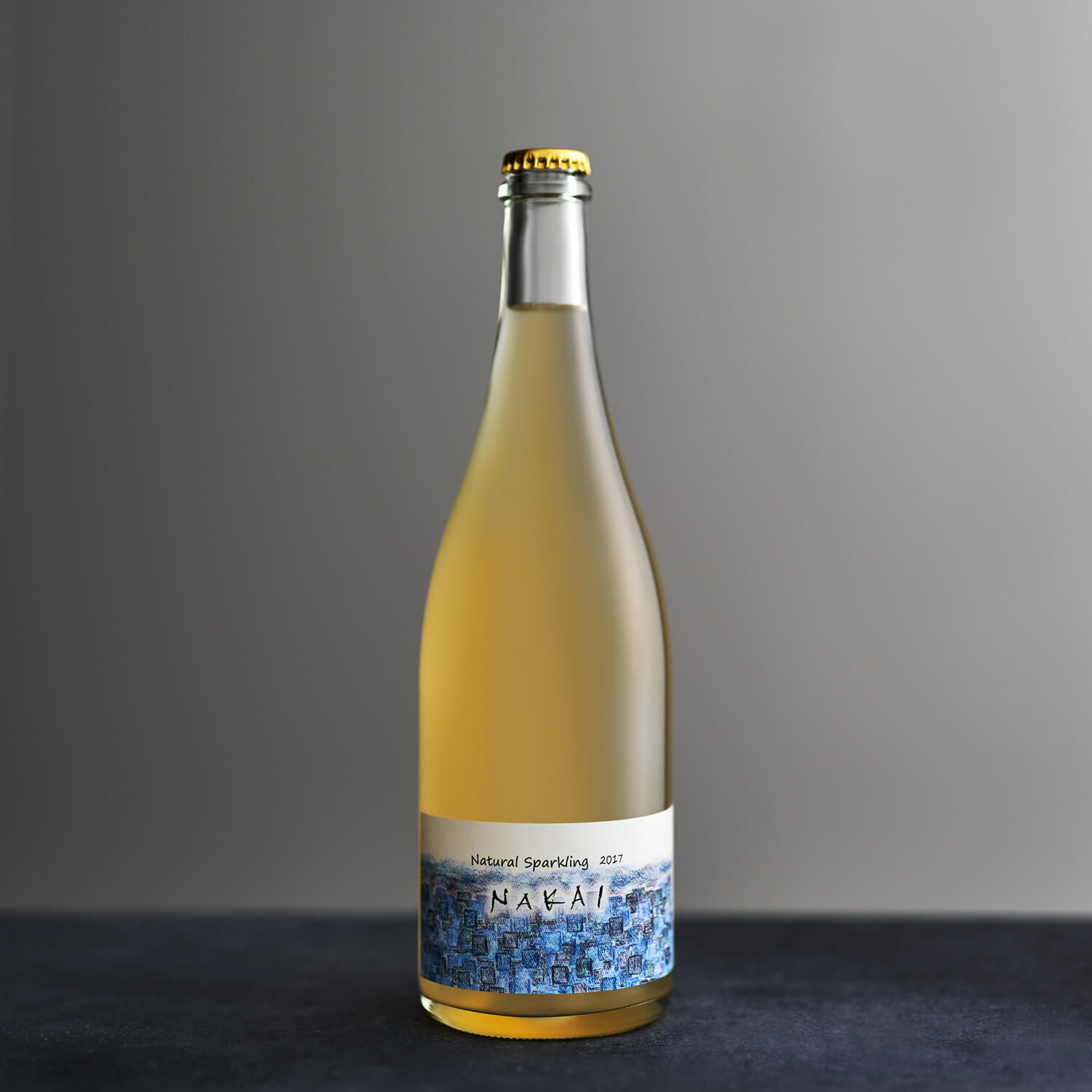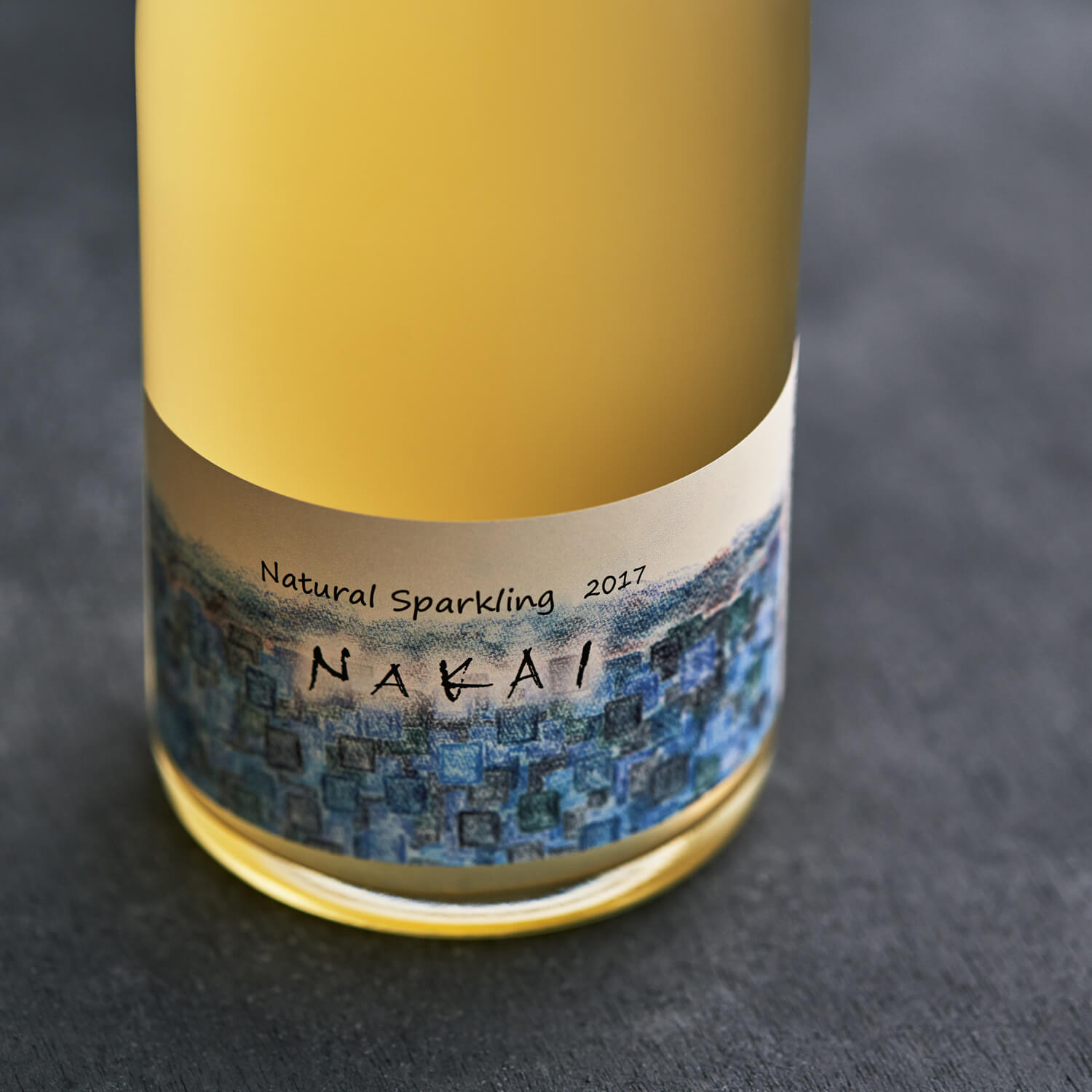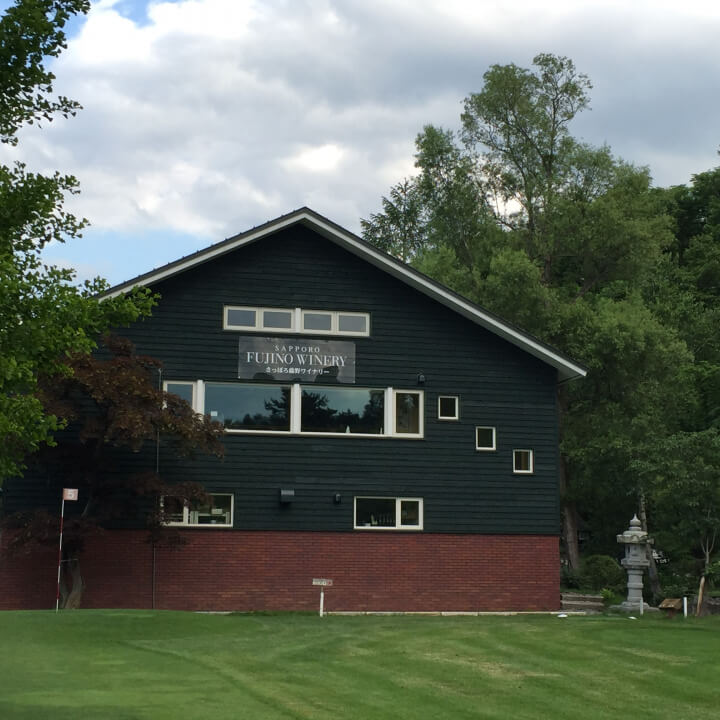Cloudy but Sparkling, Wonderfully Refreshing
Naturally sparkling wines from Sapporo Fujino Winery

Slightly sparkling or ‘Natural Sparkling’ well describes the wines produced at the Sapporo Fujino Winery, in the suburbs of Sapporo. The creator is Tadayuki Uramoto, still in his twenties—definitely a vintner to watch.
Uramoto, originally unaffiliated with the winery, attended a wine-tasting where he discovered the Sapporo Fujino wine to have a surpassingly gentle first impression and pure flavor; then, through interacting with and training under the creators at the winery, was assigned to handle fermentation at the winery. ‘To my way of thinking, ‘wine’ always means ‘natural wine’’, reflects Uramoto, ‘and that was always a big attraction’.
Easy to say, but creating a naturally sparkling wine is far from simple. Slightly sparkling wines are made by bottling wine while it is still fermenting, so that carbon dioxide gas, which is produced by fermentation that continues in the bottle, can’t escape and thus becomes dissolved into the wine. But the conditions in the bottle are harsh for wild yeast. ‘In ordinary Champagne, sugar and yeast are added to fermented wine, which is then fermented a second time. Grape juice is the only thing we add. No cultured yeast, no additives are added. We depend on the yeast already on the grapes for the entire fermentation process’. The overriding concern is to use healthy grapes, but selecting the best time for bottling, to allow the wild yeast to work their best, also requires fastidious care. ‘If the grapes are healthy, they can be fermented without adding sulfites. This means that, after bottling, the carbon dioxide inside the bottle will preserve the wine, which makes it possible to produce wine without adding sulfites at any stage’. The result is a ‘cloudy-sparkling’ wine, with a trace of turbidity. This is because the sediment (spent yeast cells) has not been strained away, which gives a savory, mellow sensation. The alcohol content is low, and the pure citrus flavor is truly juicy, and piquant acid creates exhilarating feeling. With an outstanding taste that goes straight to the heart, you’ll find yourself sipping one glass after another.


Winery: Sapporo Fujino Winery
Area under direct cultivation: 1.8 hectares (1 ha in Fujino, 0.8 ha in Kurisawa)
Name of fermenter: Tadayuki Uramoto
Variety and origin: Kerner, Müller Thurgau (Yoichi-cho, Yoichi-gun, Shiribeshi, Hokkaido)
Volume: 750 ml
Price: ¥2,700 (including tax)
Vinification: Fermented with wild yeast, bottled while still fermenting, and allowed to ferment slowly. No sulfites are added. No sugar or acid is added.
www.vm-net.ne.jp/elk/fujinoNOTE: The 'Natural Wines' series introduces naturalist wines and natural wines produced as naturally as possible over all stages from grape cultivation to fermentation. What exactly does 'as naturally as possible' mean? In this series, it means 'minimal human intervention' during the secondary fermentation process. It also means 'no addition of sulfites during primary fermentation and bottling', or perhaps 'sulfites limited to an absolute minimum amount', and 'depending on natural yeast, without using cultured yeast, without additives'. Other expectations include 'No sugars are added, no adjustment with acids, no finishing agents, and generally no filtration'. In terms of grape cultivation, the basic premise is to avoid using synthetic agricultural chemicals, but growing wine varietals in the Japanese climate by organic methods is extremely problematic at present, so keeping the use of agricultural chemicals to a bare minimum is a reasonable expectation. As a general rule, herbicides and chemical fertilizers should be completely avoided. To successfully make wine in this way, grapes must be kept robust, and conscientious oversight of the fermentation process is indispensable. The vintners who succeed in raising grapes as naturally as possible in respect of the terroir, and the wines that they produce, are the deserving subjects of this series.
TRENDING
-
The Tattoos that Marked the Criminals of the Edo Period
Traditional tattoos were strong signifiers; murderers had head tattoos, while theft might result in an arm tattoo.

-
Paris, Tokyo: Robert Compagnon
With his co-chef and talented wife, Jessica Yang, Robert Compagnon opened one of the top new restaurants in Paris: Le Rigmarole.
 3:31
3:31 -
The Story of Sada Yacco, the Geisha who Bewitched Europe
Described by Dazed magazine as the first beauty influencer, she has been restored to her former glory since 2019.

-
Ito Jakuchu's Naturalist Paintings
From 15 September until 14 October 2018, the Petit Palais showcased the artist's iconic ‘Images of the Colourful Realm of Living Beings’.

-
Chiharu Shiota, Red Threads of the Soul
Last year, more than 660,000 people visited the retrospective 'Chiharu Shiota: The Soul Trembles' exhibit at the Mori Art Museum.





